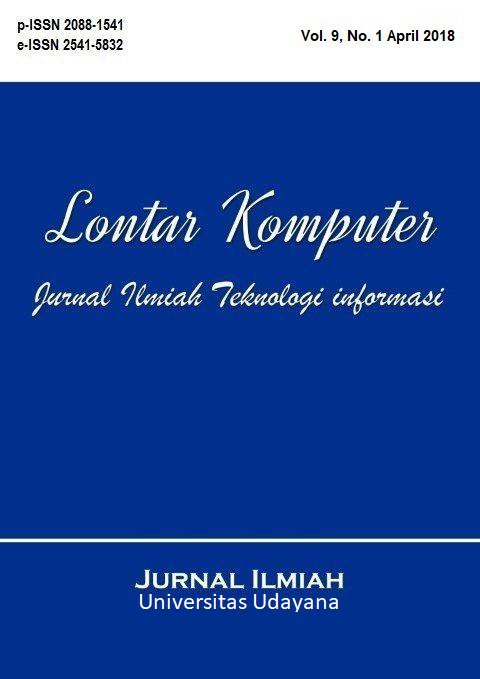Requirements Association Extraction based on Use Cases Diagram
Abstract
Requirements are the initial step in the software development process. It is very important to ensure the association (relationship) of requirements and high quality of specification as more than three-quarters failure of software derives from the software requirement process. Therefore, the analysis process is required to ensure the association between requirements and the requirements of other users. As a result, interdependency requirements association is essential. This research proposes an approach of software requirements association. These are based on the reference of interdependency in the user case, namely the result of collaboration of the association of the dependency of requirements based on Unified Modeling Language (UML) design in the Use cases diagram. In this research, the mapping between requirements and use cases and interdependencies between use cases are used to determine the interdependency between requirements. The analysis presented is the association of similar requirements, requires, or, temporal, elaborates dan generalises. The purpose of this research is to generate a requirements dependency graph that models the type of dependency between requirements within a software project.
Downloads
References
[2] Z. S. H. Abad, M. Noaeen, and G. Ruhe, “Requirements Engineering Visualization: A Systematic Literature Review,” in 2016 IEEE 24th International Requirements Engineering Conference (RE), 2016.
[3] L. Globa, T. Kot, A. Reverchuk, and A. Schill, “Method of non-functional requirements balancing when service development,” J. Theor. Appl. Comput. Sci., vol. 6, no. 3, pp. 50–57, 2012.
[4] D. Siahaan, “Analisa Kebutuhan Dalam Rekayasa Perangkat Lunak,” Yogyakarta Andi, 2012.
[5] C. Arora, M. Sabetzadeh, A. Goknil, L. C. Briand, and F. Zimmer, “Change impact analysis for Natural Language requirements: An NLP approach,” in 2015 IEEE 23rd International Requirements Engineering Conference (RE), 2015.
[6] P. Achimugu, A. Selamat, R. Ibrahim, and M. N. R. Mahrin, “A systematic literature review of software requirements prioritization research,” Inf. Softw. Technol., vol. 56, no. 6, pp. 568–585, 2014.
[7] M. Batra and B. Archana, “Descriptive Literature Review of Requirements Engineering Models,” Int. J. Adv. Res. Comput. Sci. Softw. Eng., vol. 5, no. 2, pp. 289–293, 2015.
[8] S. Sabharwal, R. Sibal, and P. Kaur, “Deriving Complexity Metric Based on Use Case Diagram and its Validation,” in 2014 IEEE International Symposium on Signal Processing and Information Technology, ISSPIT 2014, 2014, pp. 102–107.
[9] Å. G. Dahlstedt, “Requirements Interdependencies – a Research Framework,” no. July, 2001.
[10] R. E. Bloomfield, P. Popov, K. Salako, V. Stankovic, and D. Wright, “Preliminary interdependency analysis: An approach to support critical-infrastructure risk-assessment,” Reliab. Eng. Syst. Saf., vol. 167, pp. 198–217, 2017.
[11] P. Sharma, R. Tripathi, V. K. Singh, and R. C. Tripathi, “Automated patents search through semantic similarity,” IEEE Int. Conf. Comput. Commun. Control. IC4 2015, 2016.
[12] M. A.-R. Al-Khiaty and M. Ahmed, “Similarity Assessment of UML Class Diagrams using a Greedy Algorithm,” in 2014 International Computer Science and Engineering Conference (ICSEC), 2014, pp. 228–233.
The Authors submitting a manuscript do so on the understanding that if accepted for publication, the copyright of the article shall be assigned to Jurnal Lontar Komputer as the publisher of the journal. Copyright encompasses exclusive rights to reproduce and deliver the article in all forms and media, as well as translations. The reproduction of any part of this journal (printed or online) will be allowed only with written permission from Jurnal Lontar Komputer. The Editorial Board of Jurnal Lontar Komputer makes every effort to ensure that no wrong or misleading data, opinions, or statements be published in the journal.
 This work is licensed under a Creative Commons Attribution 4.0 International License.
This work is licensed under a Creative Commons Attribution 4.0 International License.























